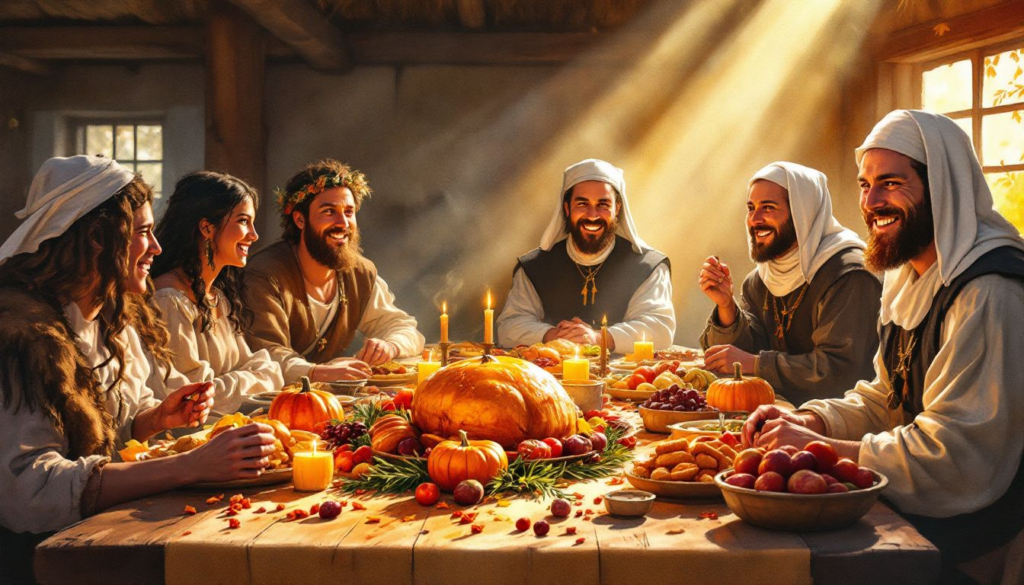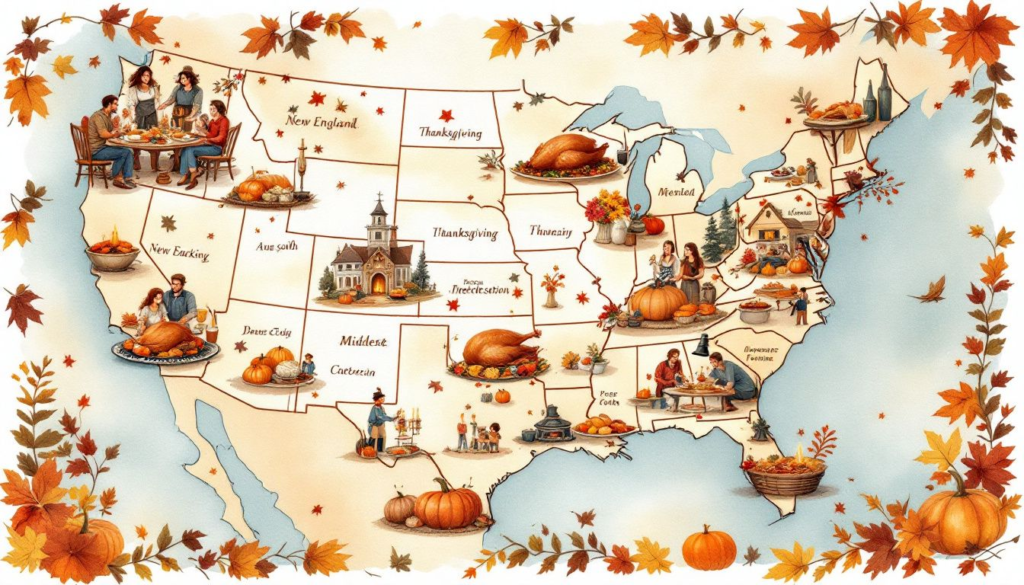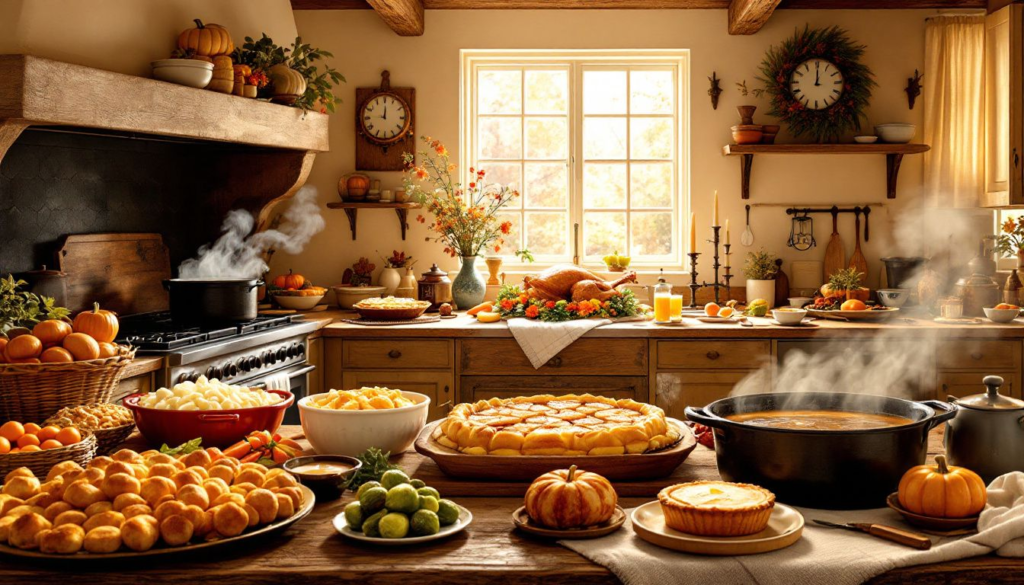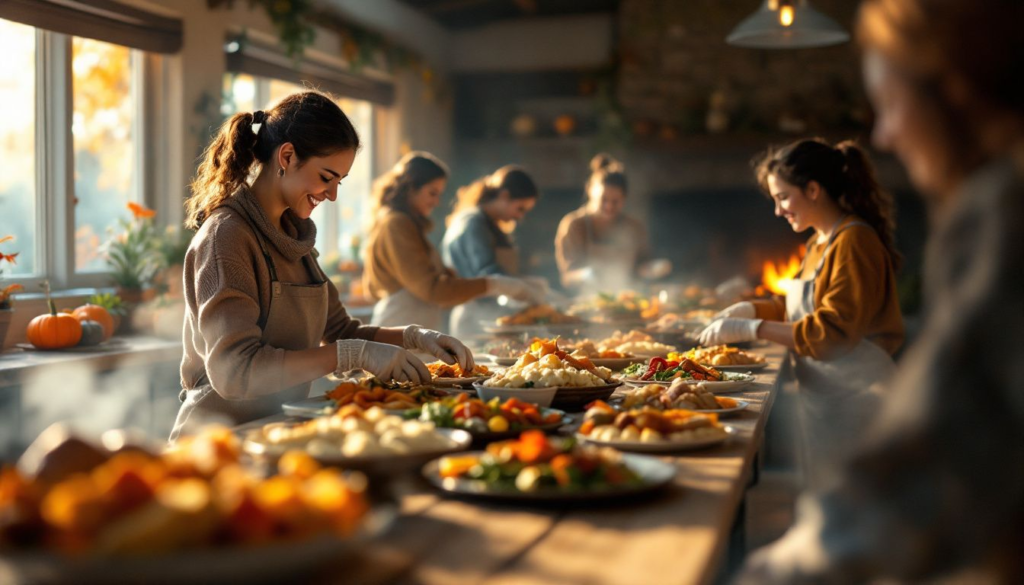As we prepare to celebrate Thanksgiving, Powder Cote II, Tennessee will be taking a short break. We will shut down production at the end of the day on Wednesday, November 27th, and resume operations on Monday, December 2nd.
We’re grateful for our incredible team and valued customers, who make it possible for us to deliver high-quality automotive, agricultural, and industrial coating services across Tennessee and beyond.
From everyone at Powder Cote II, we wish you a happy and relaxing Thanksgiving holiday!
Why the Thanksgiving Holiday Brings Families Closer
Thanksgiving holiday is a special occasion that brings families closer through shared gratitude and time-honored traditions. In this article, we delve into the origins of Thanksgiving, explore diverse customs, highlight commonly served foods, and discuss how expressing gratitude makes this holiday unique.
Key Takeaways
Thanksgiving originated in the early 17th century with the Pilgrims celebrating their first successful harvest, fostering values of gratitude and togetherness.
The holiday features various traditions, such as the Macy’s Thanksgiving Day Parade and watching football, which contribute to family bonding and celebration.
Expressing gratitude during Thanksgiving has mental health benefits, enhances family bonds, and encourages community service, reinforcing the holiday’s spirit of giving back.
The Origins of Thanksgiving

The origins of Thanksgiving date back to the early 17th century, with the Pilgrims celebrating their first successful harvest in Plymouth. This event, which took place in 1621, is often considered the “beginning” of the Thanksgiving tradition. The Pilgrims, who had faced numerous hardships since arriving in the New World, were finally able to celebrate a bountiful harvest thanks to the assistance of the Native Americans.
The first Thanksgiving feast was a grand affair, marking a moment of cooperation and gratitude between the Pilgrims and Native Americans. This feast included a variety of foods, some of which have become Thanksgiving staples today, such as turkey and other harvest-related dishes. The event was not just a celebration of the harvest but also a symbol of the Pilgrims’ gratitude for their newfound friends and allies.
Thanksgiving has evolved over the centuries, but its core values of gratitude and togetherness remain unchanged. The holiday serves as a reminder of the importance of being thankful for the blessings in our lives and the connections we share with others. It is this spirit of gratitude and community that continues to bring families closer together each year.
Thanksgiving Traditions

Thanksgiving traditions vary widely, but they all share a common theme of bringing people together. One of the most iconic traditions is the Macy’s Thanksgiving Day Parade in New York City, which attracts thousands of spectators eager to see the giant balloons and performances. This festive event has become a regular affair for many families, marking the start of the holiday season.
Another long-standing tradition is watching American football on Thanksgiving Day. Football games, dating back to the late 1800s, have become an integral part of the holiday, providing families with a fun and entertaining way to spend time together. Additionally, Turkey Trots, popular races held on Thanksgiving morning, encourage participants to run or walk before indulging in their Thanksgiving dinner.
Many families have unique customs that make their Thanksgiving celebrations special. Breaking the wishbone after the meal is a delightful superstition where two people pull apart a dried Y-shaped bone for good luck. Post-meal naps are also a common practice, often attributed to the effects of consuming turkey and other rich foods. Sharing gratitude is another cherished tradition, where family members express what they are thankful for, fostering a sense of connection and appreciation.
Modern traditions like Friendsgiving, where friends gather to share a meal, have also emerged, reflecting the evolving nature of the holiday. Engaging guests in fun activities such as Thanksgiving trivia or creating gratitude jars can enhance the festive atmosphere and make the holiday even more memorable.
These diverse traditions, both old and new, contribute to the unique charm of Thanksgiving and its ability to bring families and friends closer together.
Commonly Served Foods
Thanksgiving dinner is renowned for its abundance of delicious, commonly served foods that vary regionally but share a common theme of indulgence. The traditional meal typically includes:
roast turkey
cranberry sauce
stuffing
pumpkin pie
This creates a feast that many eagerly anticipate. Cranberry sauce, usually made from fresh cranberries sweetened with sugar, is a classic side dish that adds a tart contrast to the savory turkey.
Regional variations add a unique twist to the Thanksgiving menu. In Indiana, for example, persimmon pudding is a traditional dessert that showcases the local fruit harvest. New Englanders often serve creamed onions as a unique side dish, while in the South, macaroni and cheese is a beloved addition to the Thanksgiving table. These regional specialties highlight the diverse culinary traditions that make Thanksgiving meals so special.
Different regions have their own takes on classic dishes. For instance, cornbread dressing and sweet potato pie are common in the South, while turkey tamales are a popular choice in areas with Mexican heritage.
In Hawaii, turkey is sometimes roasted in an underground imu, and pineapple may replace traditional cranberry sauce. These variations not only reflect regional tastes but also bring a sense of cultural richness to the Thanksgiving celebration.
Expressing Gratitude
Expressing gratitude is a fundamental aspect of Thanksgiving, offering numerous benefits for both mental and physical health. Practicing gratitude has been shown to improve sleep, enhance relationships, and lower the risk of depression and anxiety disorders. Focusing on our blessings helps cultivate a positive outlook and fosters well-being.
There are many ways to express gratitude during Thanksgiving. Writing thank-you notes or delivering a letter of gratitude can be powerful ways to show appreciation and strengthen connections with loved ones. Keeping a gratitude journal, where individuals regularly reflect on what they are thankful for, is another effective method. These practices not only enhance individual well-being but also strengthen family bonds.
Engaging in gratitude exercises, such as identifying three to five things each week that we are thankful for, can nurture a grateful mindset and alleviate depressive symptoms. Expressing gratitude for both tangible and intangible gifts helps us recognize the blessings in our lives and appreciate the efforts and support of those around us. This focus on gratitude is a key reason why Thanksgiving brings families closer together.
Thanksgiving Around the Country

Thanksgiving is celebrated in various ways across the United States, reflecting the country’s rich cultural diversity. Different regions have unique customs and dishes that add local flavor to the holiday. Embracing these regional differences enhances the Thanksgiving experience, making it a celebration of both national unity and local heritage.
In New England, Thanksgiving traditions are deeply rooted in history, with many families continuing to serve dishes like creamed onions and preparing meals reminiscent of the first Thanksgiving. In the South, cornbread dressing and sweet potato pie are staples, reflecting the region’s culinary traditions. These regional variations not only showcase local customs but also bring a sense of home and familiarity to the holiday.
Thanksgiving in different parts of the country often includes unique activities and events. For example, in the Southwest, families might incorporate turkey tamales into their Thanksgiving dinner, blending Mexican heritage with traditional Thanksgiving foods. These diverse practices highlight the adaptability and inclusiveness of the holiday, making it a time for families to celebrate their unique traditions while coming together in gratitude.
Preparing for Thanksgiving

Preparing for Thanksgiving can be a daunting task, but with proper planning and organization, it can be a rewarding experience. Creating a detailed checklist for Thanksgiving preparations can significantly reduce stress and ensure that nothing is overlooked. This checklist might include tasks such as shopping for ingredients, preparing DIY decorations, and setting up the dining area with pumpkin centerpieces or thankful garlands.
Cooking a Thanksgiving dinner involves several key techniques to ensure a delicious meal. Turkey, the centerpiece of the feast, can be prepared using methods like dry brining to enhance flavor and moisture. Traditional sides, such as stuffing with sausage and herbs, roasted sweet potatoes, and mashed potatoes, can be prepared ahead of time to save valuable cooking time on the day of the meal. Utilizing slow cookers for some dishes can also free up the oven for other tasks, making the cooking process more efficient.
Having essential kitchen tools, such as a meat thermometer and a roasting pan, can facilitate efficient cooking and ensure food safety. Creating a cooking timeline helps ensure that all dishes are ready to serve simultaneously, enhancing the overall dining experience.
These preparation strategies not only make the process smoother but also allow families to focus on enjoying the holiday together.
Thanksgiving and Community Service

Thanksgiving is not only a time for family gatherings but also an opportunity to give back to the community. Community food drives and dinners are organized across the country to help those in need, fostering a sense of unity and gratitude. These events provide numerous opportunities for individuals to volunteer at local food banks, soup kitchens, and food pantries.
Volunteers can engage in various activities during Thanksgiving, such as sorting and packing food, delivering meals, and assisting families at food banks. Hosting a virtual food drive is another effective way to support local charities during the Thanksgiving season, allowing people to contribute even if they cannot volunteer their time. Donating food items to local food banks is also a valuable alternative for those who wish to help.
Engaging in community service during Thanksgiving not only helps those in need but also fosters a sense of community and connection among participants. These acts of service embody the spirit of gratitude, reminding us of the importance of giving back and supporting one another. This communal aspect of Thanksgiving reinforces the holiday’s power to bring people closer together.
The Impact of Thanksgiving on Mental Health
Thanksgiving has a positive impact on mental health, primarily through the practice of gratitude. Expressing gratitude can activate the body’s relaxation response, reducing overall stress levels and enhancing mental well-being. Regular gratitude practice is associated with lower levels of depression and higher life satisfaction. Focusing on the present and appreciating our blessings fosters positive emotions and builds stronger relationships.
Family gatherings during Thanksgiving provide an opportunity for connection and support, which are essential for mental health. Sharing a meal and expressing gratitude together can create a sense of belonging and strengthen family bonds. These gatherings also serve as a coping mechanism for anxiety, as they redirect focus to the present moment and the positive aspects of life.
Volunteering during Thanksgiving further enhances mental health by fostering a sense of community and purpose. Engaging in acts of service can improve happiness, reduce stress, and build a sense of connection among participants. The combination of improved mental and physical health through gratitude and community involvement supports overall well-being during Thanksgiving.
Thanksgiving and the Christmas Shopping Season
Thanksgiving marks the beginning of the Christmas shopping season, with Black Friday following shortly after. Black Friday is known for significant sales and shopping, offering consumers the chance to purchase holiday gifts at discounted prices. This shopping frenzy has evolved over the years, with many shoppers now viewing it as one of many sale opportunities rather than the only day for the best deals.
This year, the period between Black Friday and Christmas is the shortest it has been in five years, putting pressure on retailers for timely delivery. A significant portion of consumers is expected to shop online, with over three-quarters planning to do more than half of their holiday shopping through digital channels.
This shift in shopping behavior highlights the growing importance of e-commerce during the holiday season and its impact on consumer habits.
Summary
In summary, Thanksgiving is a holiday that brings families closer through its rich history, diverse traditions, and the practice of gratitude. From the origins of the holiday with the Pilgrims and Native Americans to modern-day celebrations, Thanksgiving offers a unique opportunity to connect with loved ones and express appreciation for the blessings in our lives.
The holiday’s impact extends beyond family gatherings, influencing community service, mental health, and even the Christmas shopping season. By embracing the spirit of gratitude and giving back, we can enhance our well-being and strengthen our bonds with others. As we gather around the Thanksgiving table, let us remember the importance of gratitude and the power of togetherness.
Frequently Asked Questions
What is Thanksgiving and why is it celebrated?
Thanksgiving is an annual holiday in the U.S. and Canada that celebrates the harvest and blessings of the past year, with American traditions tracing back to a 1621 feast shared between the English Pilgrims and the Wampanoag people. It serves as a time for gathering and expressing gratitude for the abundant harvest and shared experiences.
What is the historical origin of Thanksgiving?
Thanksgiving originated in the early 17th century, specifically with the Pilgrims celebrating their successful harvest in Plymouth in 1621, which symbolized cooperation and gratitude between the Pilgrims and Native Americans.
What are some common Thanksgiving traditions?
Thanksgiving traditions often include watching the Macy’s Thanksgiving Day Parade, enjoying football games, participating in Turkey Trots, breaking the wishbone, taking post-meal naps, and expressing gratitude. Engaging in these customs fosters connection and appreciation among family and friends.
What are some commonly served foods at Thanksgiving?
Commonly served foods at Thanksgiving include roast turkey, cranberry sauce, stuffing, and pumpkin pie, along with regional specialties like creamed onions and macaroni and cheese. These dishes create a festive and hearty meal that brings people together.
How does Thanksgiving impact mental health?
Thanksgiving positively impacts mental health by fostering gratitude and enhancing relationships, both of which contribute to overall well-being. Engaging in community service during this time can also reduce stress and further promote mental health.